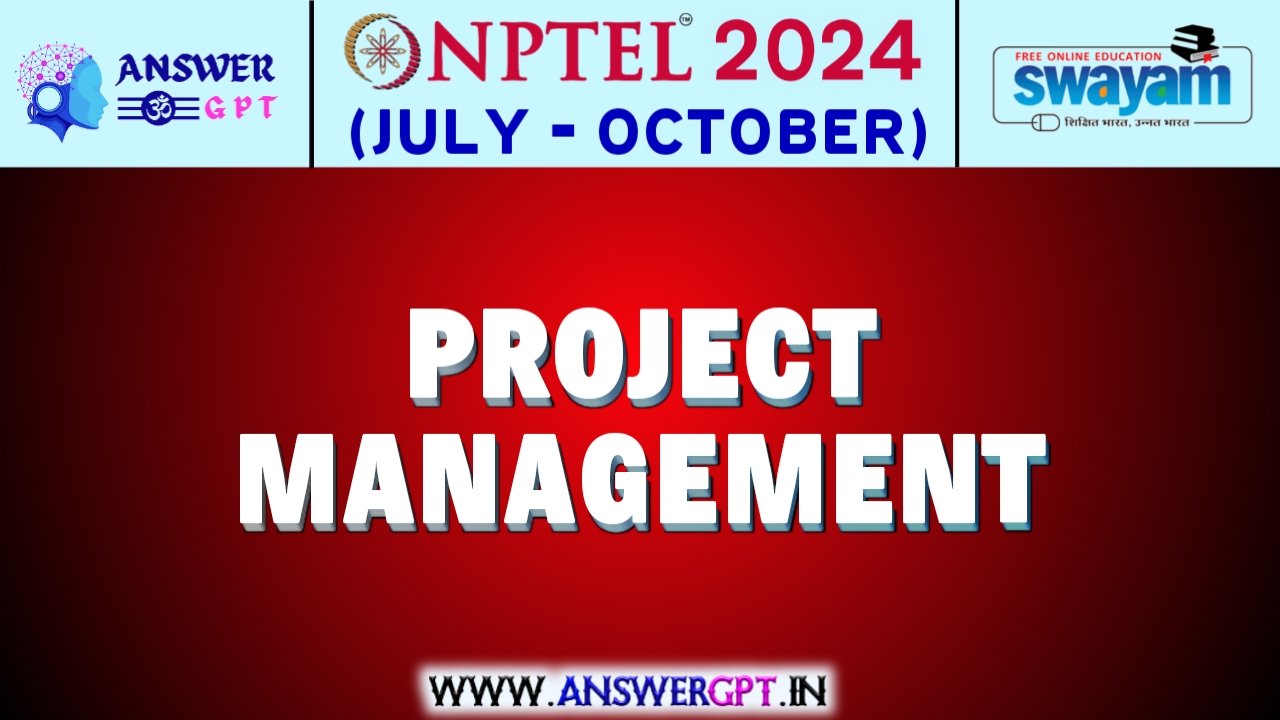Project Management Week 2 NPTEL Assignment Answers 2025
NPTEL Project Management Week 2 Assignment Answers 2024
1. The ideal project manager should be _________.
a) a direct, technical supervisor knowledgeable in the technology of the process being used
b) both generalist/facilitator and have a high level of technical competence in the science of the project
c) a facilitator and specialist with technical credibility
d) a technical specialist competent in principles of robust design
Answer: b
Explanation: The ideal project manager balances both generalist leadership skills and technical know-how. This allows them to communicate effectively, solve problems, and manage project complexity.
2. Which of the following is not a phase in the Tuckman ladder?
a) forming
b) defining
c) norming
d) mourning
Answer: d
Explanation: The original Tuckman ladder includes: Forming, Storming, Norming, Performing, and later Adjourning. “Mourning” is a misnomer and not a formal stage.
3. The project manager makes a _________ by allowing one aspect of the project to get worse in return for allowing another aspect of the project to get better.
a) decision
b) turnaround
c) trade-off
d) chart
Answer: c
Explanation: In project management, a “trade-off” is a decision-making process where one project constraint (e.g., time, cost, scope) is sacrificed for improvement in another.
4. Listed below are three aspects of leadership. Match them with their associated competencies.
a) Intellectual quality
b) Managerial quality
c) Emotional quality
- Engaging communication, managing resources, empowering, developing, and achieving
- Self-awareness, emotional resilience, motivation, sensitivity, influence, intuitiveness, conscientiousness
- Critical analysis and judgment, vision and imagination, and strategic perspective
a) b=2, c=3, a=1
b) b=1, c=2, a=3
c) b=1, c=3, a=2
d) b=3, c=2, a=1
Answer: b
Explanation:
- Managerial quality → 1 (engaging, managing, developing)
- Emotional quality → 2 (self-awareness, motivation, sensitivity)
- Intellectual quality → 3 (strategic thinking, judgment)
5. After identifying the stakeholders, a _________ should be created to maintain essential information about them.
a) stakeholder register
b) stakeholder plan
c) project plan
d) request for proposal
Answer: a
Explanation: A stakeholder register is a document containing details like stakeholder roles, interests, contact info, and influence level on the project.
6. Toward the end of the project lifecycle, conflict intensity is the greatest with respect to ____________.
a) cost
b) schedules
c) scope
d) quality
Answer: b
Explanation: As deadlines approach, schedule pressures increase, which often leads to higher tension and conflict among project members and stakeholders.
7. ______________ is a method of transforming contractual relationships into a cohesive, cooperative project team.
a) Project partnering
b) Chartering
c) Meeting
d) Stakeholder management
Answer: a
Explanation: Project partnering aligns all parties (client, contractor, vendors) with shared goals and open communication to reduce disputes and boost collaboration.
8. _______ is a requirement between negotiators.
a) Power
b) Control
c) Honesty
d) Time
Answer: c
Explanation: Trust and honesty are fundamental to successful negotiation. Without it, parties can’t reach a mutually acceptable agreement.
9. When dealing with conflict between parties, it is recommended that one __ in order to avoid the conflict becoming interpersonal.
a) avoid the situation
b) define the substantive problem
c) leisurely discuss the issue
d) focus on interests
Answer: b
Explanation: Defining the real issue helps in addressing the problem logically without it turning into a personal attack or emotional argument.
10. Negotiating to a(n) __ solution is the key to conflict resolution in project management.
a) win-lose
b) win-win
c) avoidance
d) confrontation
Answer: b
Explanation: A win-win outcome ensures both parties feel heard and gain something positive, fostering better collaboration and long-term relationships.



![[Week 1-8] NPTEL Project Management Assignment Answers 2024](https://answergpt.in/wp-content/uploads/2024/02/NPTEL-Project-Management-Assignment-Answers-2024.jpg)
![[Week 1-8] NPTEL Emotional Intelligence Assignment Answers 2025](https://answergpt.in/wp-content/uploads/2025/01/Emotional-Intelligence-2025.jpg)

